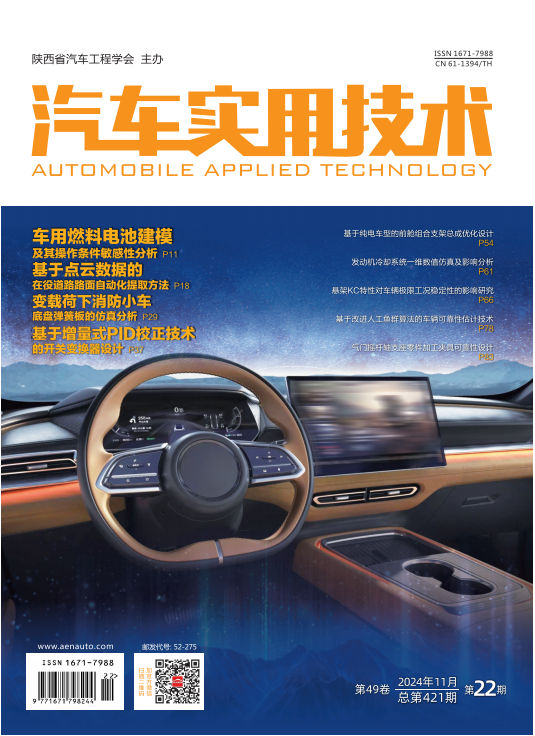|
|
One-dimensional Numerical Simulation and Influence Analysis
for Engine Cooling System
REN Zhijun1,2
, SUN Yanwei1,2
, WANG Fengjuan*1,2,3
, LIU Wentao1,2
, LI Yong1,2
,
WANG Junran1,2
, CHEN Peng1,2
2024, 49(22):
61-65,88.
DOI: 10.16638/j.cnki.1671-7988.2024.022.012
The engine cooling system is matched with the overall vehicle development, and various
car manufacturers have different water parts flow resistance characteristics, pipe layouts, and water
outlet positions, which greatly affect the water flow distribution. In order to explore the influence of
various variables on the system-level water flow, this article conducts relevant simulation research.
By building a one-dimensional simulation model of the cooling system to obtain the water flow of each water accessory, the article analyzes the influence of each variable on the distribution of branch
water flow. Using the Flowmaster software, the article builds a one-dimensional simulation model of
the cooling system with a single thermostat and a dual thermostat, and compares the effects of single
and dual thermostats on the cooling system's water flow distribution. It also validates the accuracy of
the simulation model and the rationality of the simulation method by comparing the measured water
flow of single and dual thermostats. Through this model, the article verifies the influence of pipe
length, inner diameter, bending number, and water inlet and outlet positions, etc., on branch water
flow, providing reference for subsequent cooling system branch design and homologation.
References |
Related Articles |
Metrics
|

